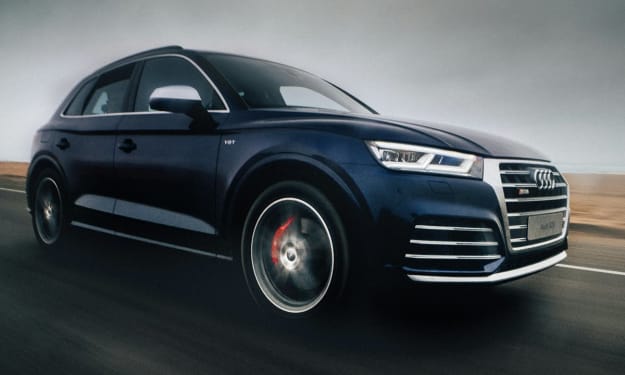The all new Volkswagen ID.7 with sophisticated aerodynamics concept car
The ID.7 represents Volkswagen's inaugural electric model in the upper mid-sized class nearing production concept car.

The ID.7 represents Volkswagen's inaugural electric model in the upper mid-sized class. Boasting an impressive range of up to 700 kilometers (WLTP)2, this Volkswagen sedan establishes itself as an efficiency champion. Alongside its cutting-edge propulsion system, the ID.7's remarkable range can be attributed to its meticulously crafted aerodynamics. Through close collaboration between the Design and Development departments, the ID.7 achieves an aerodynamically favorable basic shape, boasting a low drag coefficient (Cd value) of 0.23 and a frontal area of 2.46 square meters.
Approximately 50 percent of the Cd value for vehicles like the ID.7 is influenced by the body shape. The wheels and tires play a role in around 30 percent, while the underfloor contributes 10 percent. The remaining 10 percent is influenced by functional openings that facilitate the flow of air to various components, such as the radiators located in the vehicle's front end. The ID.7 stands out as the most aerodynamic model within the ID. lineup, as evidenced by its silhouette—a nearly five-meter-long vehicle. Daniel Scharfschwerdt, a Volkswagen designer, emphasizes the paramount importance of aerodynamics during the ID.7's design process, leading to features such as the low front end, smooth transition into the bonnet, and the sleek windshield. The coupe-like roof shape and tapering rear end were also carefully crafted to optimize aerodynamic performance.
During the early stages of product development, meticulous attention was devoted to the exterior design, underbody, wheels, and other intricate details. To achieve optimal results, close collaboration between developers and designers was essential. Stephan Lansmann, the project engineer responsible for ID.7 aerodynamics, highlights the iterative process involving regular consultations between the Development and Design departments. This approach combines extensive computer simulations for flow calculations with wind tunnel tests.
The ID.7 showcases several aerodynamic strengths. It features an almost fully enclosed underbody, complemented by newly developed wheel spoilers at the front. These spoilers guide the air smoothly along the wheels underneath the vehicle, minimizing turbulence. Air curtains positioned on the sides of the front bumper direct the airflow around the vehicle's front end, reducing energy loss. Flared side sills prevent air from entering the underbody area and shield the rear tires from excess airflow. Additional spoilers and trim panels guide the air effectively on the underbody.
Lansmann highlights the significant contribution of wheels to the overall aerodynamics of electric vehicles. Consequently, special attention was given to wheel rim design, ensuring optimal aerodynamic properties while meeting brake cooling requirements. Tire contours were also carefully designed using flow simulations, enabling the optimization of variants with less favorable aerodynamic characteristics during the concept phase.
The holistic aerodynamic development process encompassed other areas as well. For instance, functional openings at the front of the vehicle, responsible for directing air to the radiators, were taken into account. In the ID.7, the airflow is actively controlled by an electrically operated radiator roller blind, reducing drag. Further, the roller blind exclusively unlocks when targeted cooling of the power units and battery is essential. At the rear, aerodynamic efficiency is assured by the well-crafted diffuser, tailgate, and side separation edges.
The development process commences with computer simulations, with frequent updates every two weeks throughout the first year. The design team supplies CAD data, allowing several thousand processors to calculate airflow values, including details such as flush-recessed door handles and aerodynamically optimized mirrors. Wind tunnel testing occurs once the design stabilizes, typically after approximately one and a half years of development. Volkswagen clay models of the ID.7 are utilized in the wind tunnel, enabling precise adjustments based on new insights. Prototype parts from 3D printers are also employed to test numerous variants,
optimizing components like the aerodynamic exterior mirrors. Through this meticulous process, the ID.7 achieves exceptional aerodynamic properties, with a best-in-class drag coefficient (Cd value) of 0.23 within the entire Volkswagen ID. family.





Comments
There are no comments for this story
Be the first to respond and start the conversation.